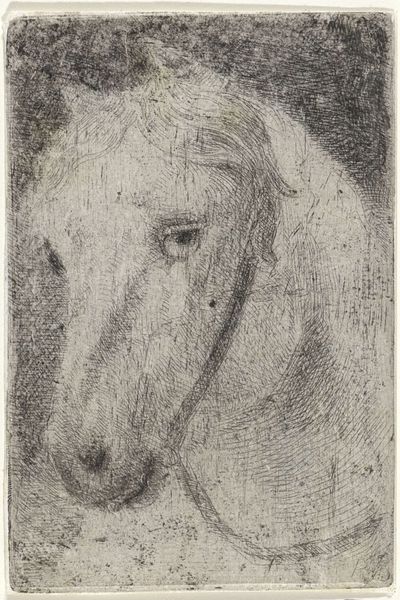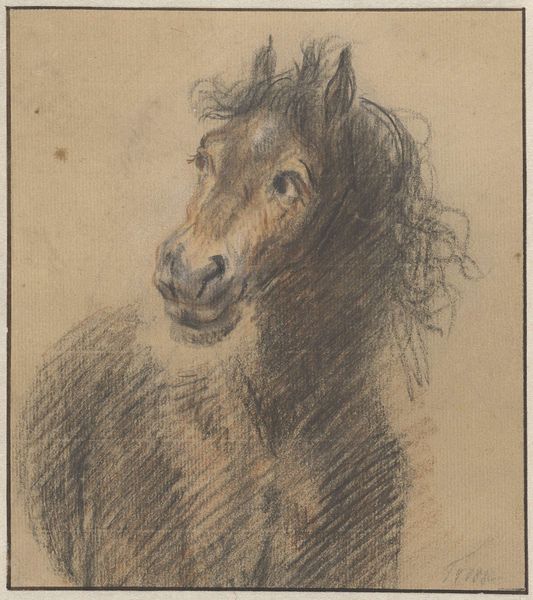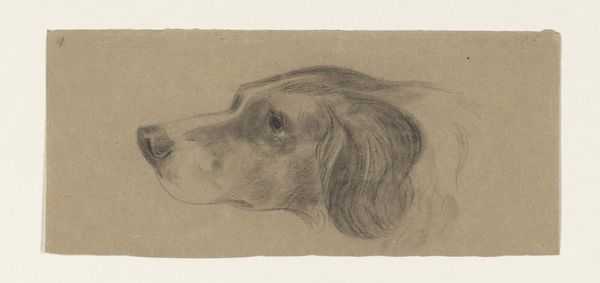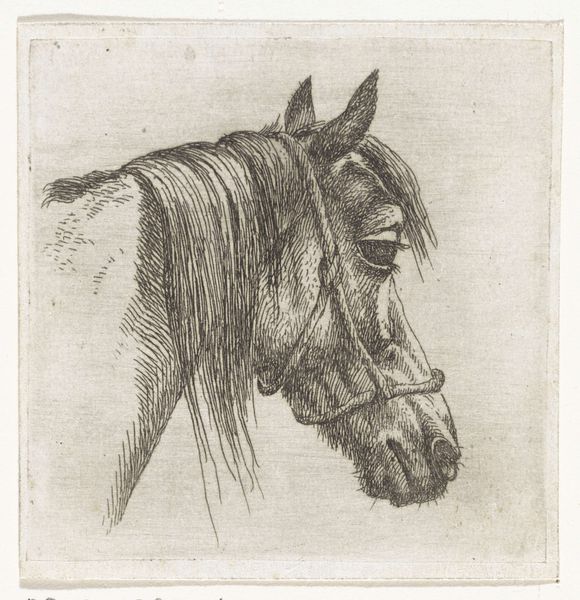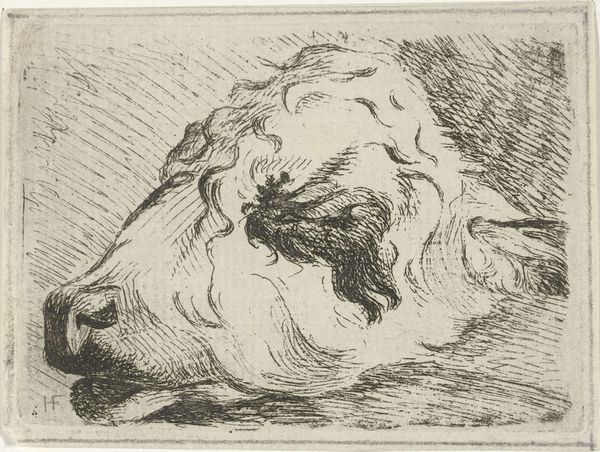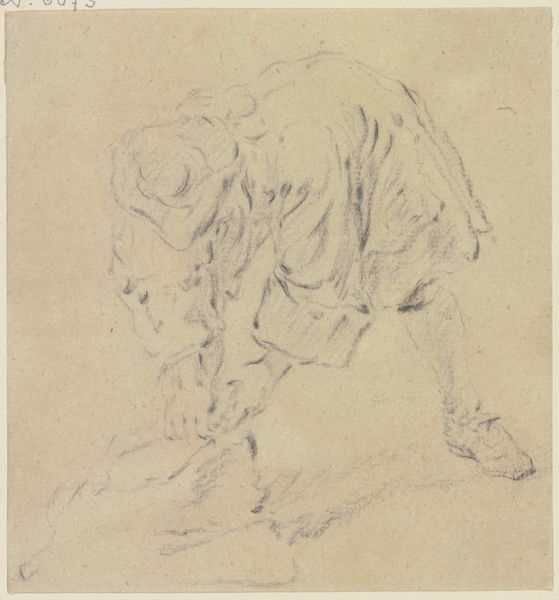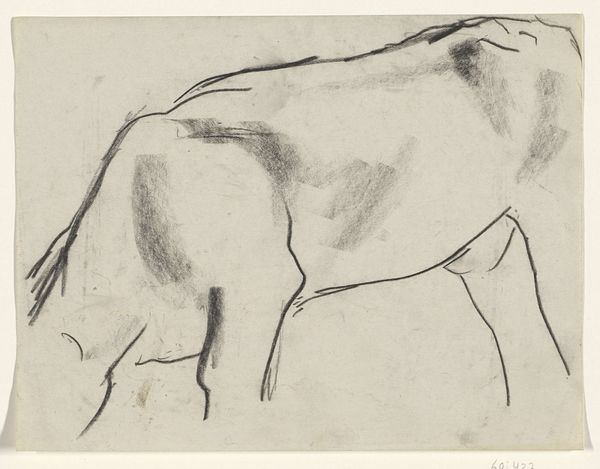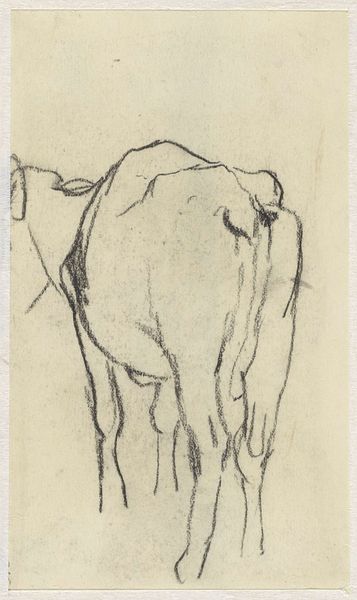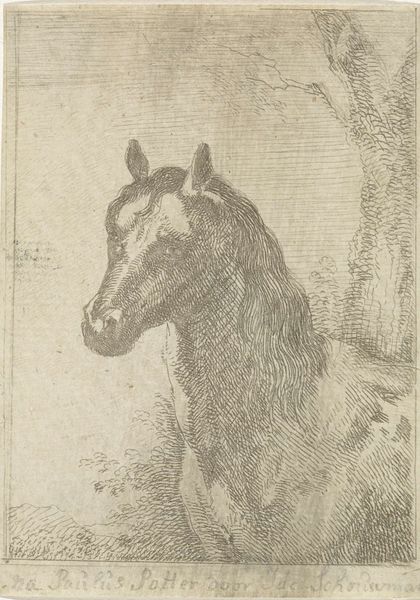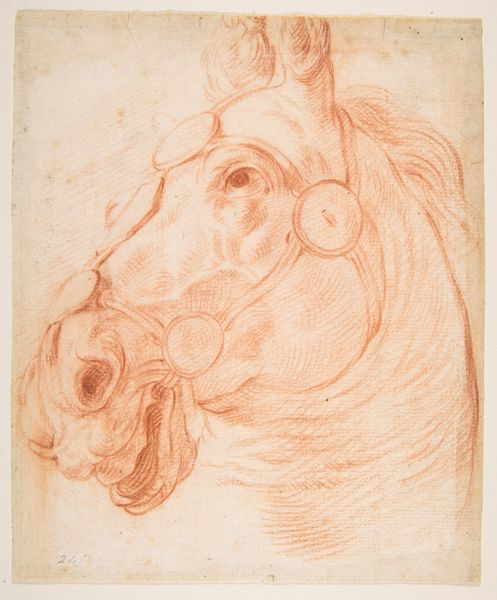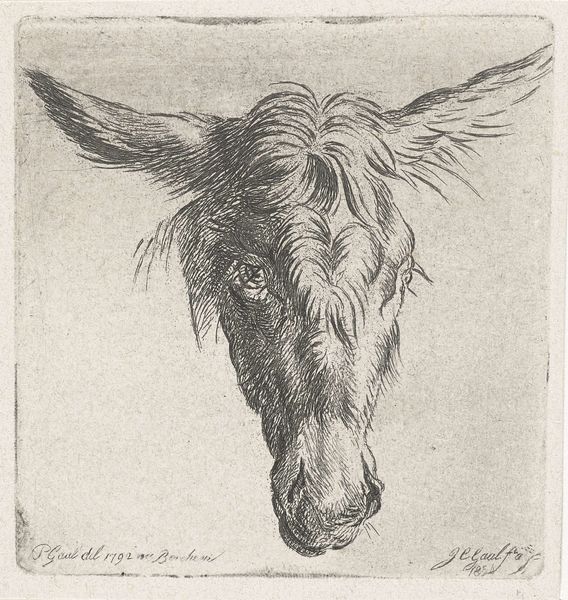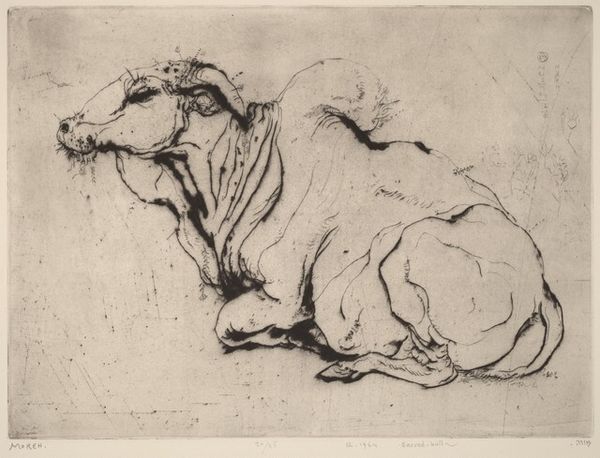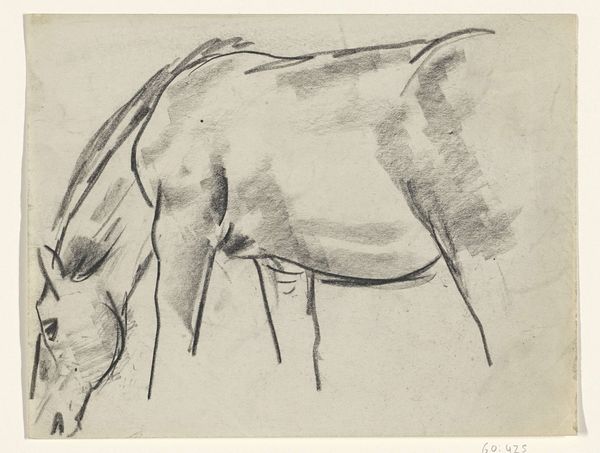
drawing, engraving
#
portrait
#
drawing
#
animal
#
charcoal drawing
#
engraving
Dimensions: height 122 mm, width 83 mm
Copyright: Rijks Museum: Open Domain
Curator: This drawing, etched with delicate lines, captures the "Hoofd van een wit paard" or "Head of a White Horse," by Arnoud Schaepkens, created sometime between 1831 and 1904. Editor: It’s striking how fragile it feels, almost ghostly. The texture suggests an old photograph, faded and worn. I am drawn to the vulnerability expressed by the downcast eye. Curator: Indeed. Schaepkens, whose work isn’t always widely discussed, manages to imbue this creature with profound emotion. Consider how the horse has long served as a symbol—of nobility, of power, of untamed freedom. Do you see any of that here? Editor: It’s certainly been tamed, perhaps broken. Its lowered head communicates submission rather than sovereignty. I see, sadly, a metaphor for exploited labor, or subjugated peoples throughout history, the animal made a commodity. Curator: That’s a potent reading, especially given horses' historical use as tools of war and agriculture, often with brutal consequences. But I am still drawn to read into that head shape nobility in form – or maybe it has the ability to heal from its hardship? Note also how he’s stripped the creature down to its bare essence; every etched line defines the planes of its face with precision, alluding, too, to the deeper symbol of self-discovery. Editor: And the method matters as well. I interpret these delicate lines as revealing historical traces. The artist engraves the figure, layering history directly into the image, a reference to the exploitation that horses are subdued to as figures in historical battle, which have continued as symbolic figures even to this day. Curator: So, this representation invites us to engage not only with the artistic skill but also with layers of emotional resonance tied to this animal. What could easily have been an academic study becomes something profoundly affecting. Editor: Precisely. And the image’s ability to spark reflection on these layers and our understanding of art and history and suffering makes this more than just a head. Curator: It reveals continuity; the way animals serve, obey, persist – the strength they possess. Editor: Leaving me wondering what can still be done today to not reproduce suffering such as this horse reveals, and in turn create true peace and freedom in a new world, without war and exploitation.
Comments
No comments
Be the first to comment and join the conversation on the ultimate creative platform.
